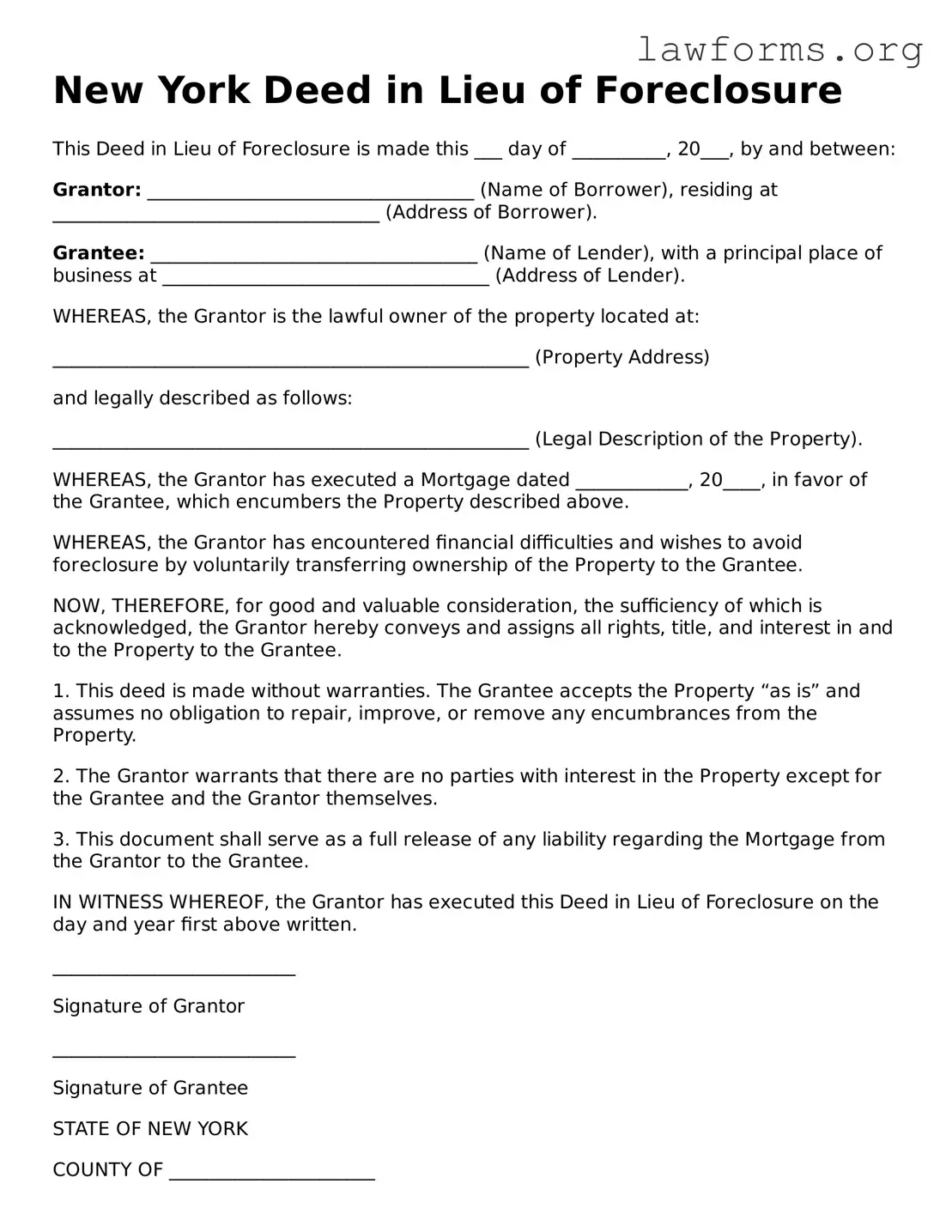New York Deed in Lieu of Foreclosure
This Deed in Lieu of Foreclosure is made this ___ day of __________, 20___, by and between:
Grantor: ___________________________________ (Name of Borrower), residing at ___________________________________ (Address of Borrower).
Grantee: ___________________________________ (Name of Lender), with a principal place of business at ___________________________________ (Address of Lender).
WHEREAS, the Grantor is the lawful owner of the property located at:
___________________________________________________ (Property Address)
and legally described as follows:
___________________________________________________ (Legal Description of the Property).
WHEREAS, the Grantor has executed a Mortgage dated ____________, 20____, in favor of the Grantee, which encumbers the Property described above.
WHEREAS, the Grantor has encountered financial difficulties and wishes to avoid foreclosure by voluntarily transferring ownership of the Property to the Grantee.
NOW, THEREFORE, for good and valuable consideration, the sufficiency of which is acknowledged, the Grantor hereby conveys and assigns all rights, title, and interest in and to the Property to the Grantee.
1. This deed is made without warranties. The Grantee accepts the Property “as is” and assumes no obligation to repair, improve, or remove any encumbrances from the Property.
2. The Grantor warrants that there are no parties with interest in the Property except for the Grantee and the Grantor themselves.
3. This document shall serve as a full release of any liability regarding the Mortgage from the Grantor to the Grantee.
IN WITNESS WHEREOF, the Grantor has executed this Deed in Lieu of Foreclosure on the day and year first above written.
__________________________
Signature of Grantor
__________________________
Signature of Grantee
STATE OF NEW YORK
COUNTY OF ______________________
On this ___ day of ____________, 20___, before me personally appeared ____________, to me known to be the person described in and who executed the foregoing instrument and acknowledged that he/she executed the same.
______________________________
Notary Public
My commission expires: _______________
